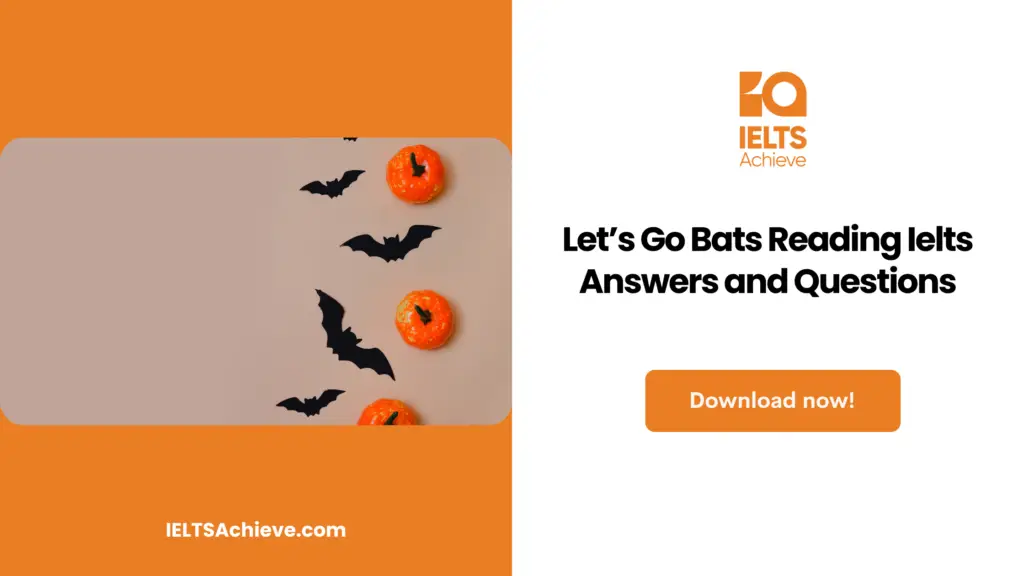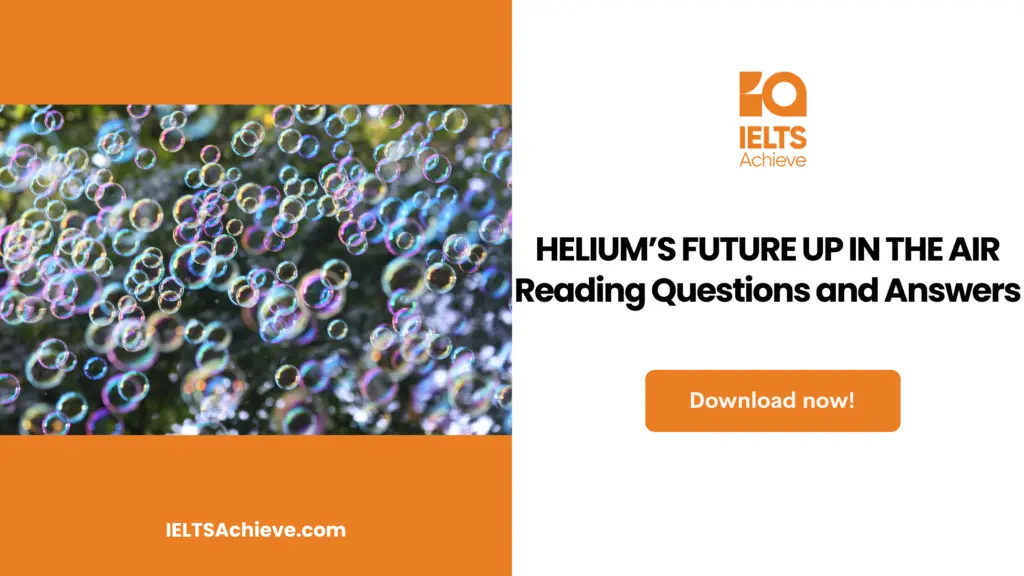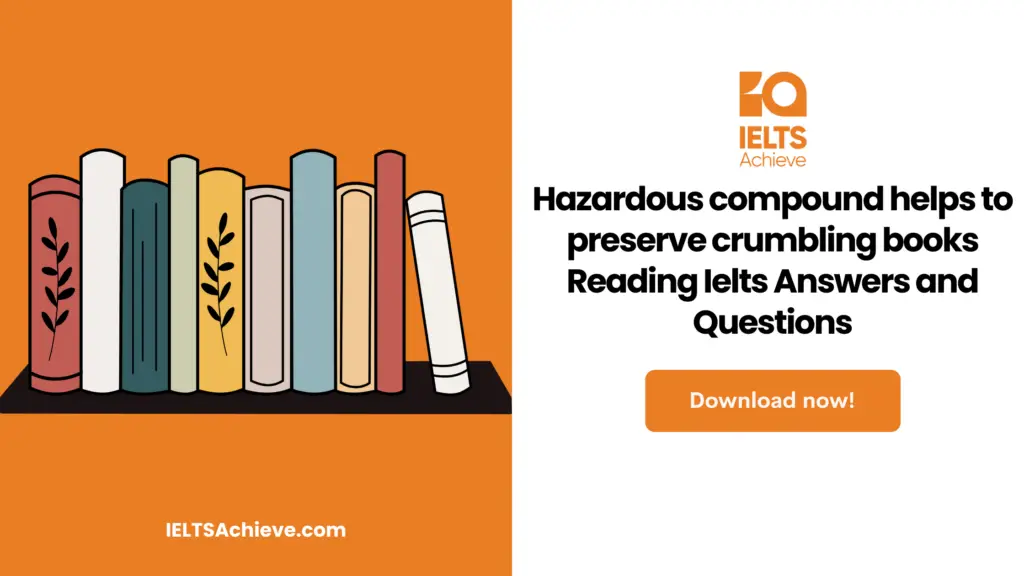The Blog post contains the following IELTS Reading Questions:
- IELTS reading Matching Headings
- IELTS reading Locating Information
- IELTS reading Summary Completion
Stay informed and prepared for success – Explore our comprehensive Reading Test Info page to get valuable insights, exam format details, and expert tips for mastering the IELTS Reading section.
IELTS Reading Passage – Let’s Go Bats

Let’s Go Bats
A. Bats find it difficult to discover their way in the dark. They hunt during the night and light is not there to help them to find prey and overcome obstacles. You might think this problem can be easily solved by altering the habits and hunting during the day. But, other creatures, like birds, immensely exploit the daytime economy. At night, the living can be made and alternative daytime trades are completely occupied, bats favoured by the natural selection which enables them to go to the night-hunting trade. Likely, the nocturnal trade goes way back to the ancestry of all mammals. Our mammalian ancestors could have survived by finding the ways at night, when the dinosaurs dominated the daytime economy. Our ancestors only emerged into the daylight substantially after the mass extinction of the dinosaurs about 65 million years ago.
B. Bats have an engineering problem, how to find both their way and prey without light. There are other creatures also facing this problem. Inevitably, the night-flying must find their way somehow during the night. Both Deep-sea fishes and whales have little or no light in day and night. Fish and dolphins exist in extremely muddy water, even in the presence of light, it cannot see through as it is hurdled and scattered by the dirt in the water. Numerous modern animals live through, where seeing is difficult or impossible.
C. What solutions engineers would give, if we posed the question on how to navigate in the dark. The first one which comes to his mind would be to manufacture light such as using a lantern or searchlight. Fireflies and some fish (with the help of bacteria) are able to manufacture their own light, the process can consume a lot of energy. Fireflies employ their light to attract mates. This doesn’t need an immense amount of energy: a female can see the male’s tiny pinprick of light from some distance in the dark, because her eyes are exposed directly to the source of the light itself. However, finding one’s way using light requires a lot of energy because the eyes need to detect the tiny fraction of light which bounces off each part of the scene. Therefore, the light source needs to be stronger when it is used as a headlight to illuminate the path, than when it is used as a signal to others. Except for some weird deep-sea fish, no animal apart from the man manufactures light to find the way.
D. What else would the engineer think of as a solution? Sometimes, blind people seem to have the sense of recognizing the hurdles in their path. The name that has been given to it is ‘facial vision’, since it feels like a sense of touch on the face of the blind people. One report tells that a wholly blind boy rides a tricycle at good speed around the block near his home by using facial vision. Experiments revealed that there is no connection between the face and the facial vision, even though the sensation referred to occurred in the front of the face, like the referred pain in the phantom limb. Actually, the sensation of facial vision goes through the ears.
Blind people, unknowingly, use their echoes of their own footsteps and of other sounds to sense the obstacles in their path. Engineers had already built instruments by using this principle, for example, to measure the depth of the sea under a ship. Weapon designers adapted this technique to detect the submarines. Both sides in the Second World War depended on these devices, under code names such as Asdic (British) and Sonar (American), as well as Radar (American) or RDF (British). It uses radio echoes instead of sound echoes.
E. At that time Sonar and Radar pioneers didn’t know, but now all the world knows that bats or natural selection made the bats perfected the system about tens of millions of years ago. And, it is admirable that its radar’s ability to detect and navigate the way. Technically, it is wrong to talk about bat ‘radar’ as they do not use radio waves. It is actually a sonar. But, the radar and sonar resembles more in terms of mathematical theories. By applying radar theory to bats, we got most of the scientific understanding of the details. Donald Griffin, American zoologist played a major role in discovering the sonar in bats and coined the term ‘echolocation’ which covers sonar and radar. This term is applicable to both animals and humans.
Unlock your full potential in the IELTS Reading section – Visit our IELTS Reading Practice Question Answer page now!
Recommended Questions:
Renewable Energy IELTS Reading Question with Answer
Let’s Go Bats IELTS Reading Questions
Questions 1 – 5
The reading passage has five paragraphs, A-E.
Choose the correct heading for each paragraph from the list of headings below.
Write the correct number, i-viii, as your answer to each question
List of Headings
- i. Problems in surviving without light
- ii. How Dinosaurs Extinct ?
- iii. Manufacturing light and energy expense
- iv. Radar and Sonar
- v. A Scientific explanation on how radar works
- vi. Daytime economy and mammalian ancestors
- vii. Bats and extra sensory perception
- viii. How does facial vision work ?
- Paragraph A
- Paragraph B
- Paragraph C
- Paragraph D
- Paragraph E
Ready to conquer Matching Headings questions? Click here to learn essential tips and techniques for matching headings accurately to paragraphs or sections in the IELTS Reading section.
Questions 6 – 10
This reading passage has five paragraphs, A–E. Which paragraph contains the following information? Write the correct letter, A – E, as your answer to each question.
6. Finding one’s way using light consumes a lot of energy compared to giving signals to others.
7. Bats do not use radio waves.
8. Our mammalian ancestors survived at night when dinosaurs dominated the daytime.
9. The sensation of facial vision goes into the ears.
10. Fish and dolphins find it difficult to survive, even in the presence of light, as they are living in the muddy water and cannot see through dirt in the water.
Questions 11 – 13
Complete the summary below.
Write NO MORE THAN TWO WORDS from the passage for each answer.
Blind People’s Navigation
Blind people seem to find their way and recognize the obstacles in their path. The term given to it is 11_____. In one report, a totally blind boy rides a 12_____ at good speed around the block of his house using facial vision. Without knowing, blind people hear the 13_____ of their own footsteps and other sounds to sense the obstacles in their path.
Boost your performance in Summary, Notes, Table, and Flowchart Completion tasks. Click here to explore our detailed guide and learn how to effectively complete summaries, notes, tables, and flowcharts in the IELTS Reading section.
Unlock your full potential in the IELTS Reading section – Visit our IELTS Reading Practice Question Answer page now!
Recommended Questions:
Renewable Energy IELTS Reading Question with Answer
Let’s Go Bats IELTS Reading Answers
1. Paragraph A = vi
2. Paragraph B = i
3. Paragraph C = iii
4. Paragraph D = viii
5. Paragraph E = iv
6. Paragraph C
7. Paragraph E
8. Paragraph A
9. Paragraph D
10. Paragraph B
11. Facial vision
12. Tricycle
13. Echoes

We hope you found this post useful in helping you to study for the IELTS Test. If you have any questions please let us know in the comments below or on the Facebook page.
The best way to keep up to date with posts like this is to like us on Facebook, then follow us on Instagram and Pinterest. If you need help preparing for the IELTS Test, join the IELTS Achieve Academy and see how we can assist you to achieve your desired band score. We offer an essay correction service, mock exams and online courses.

